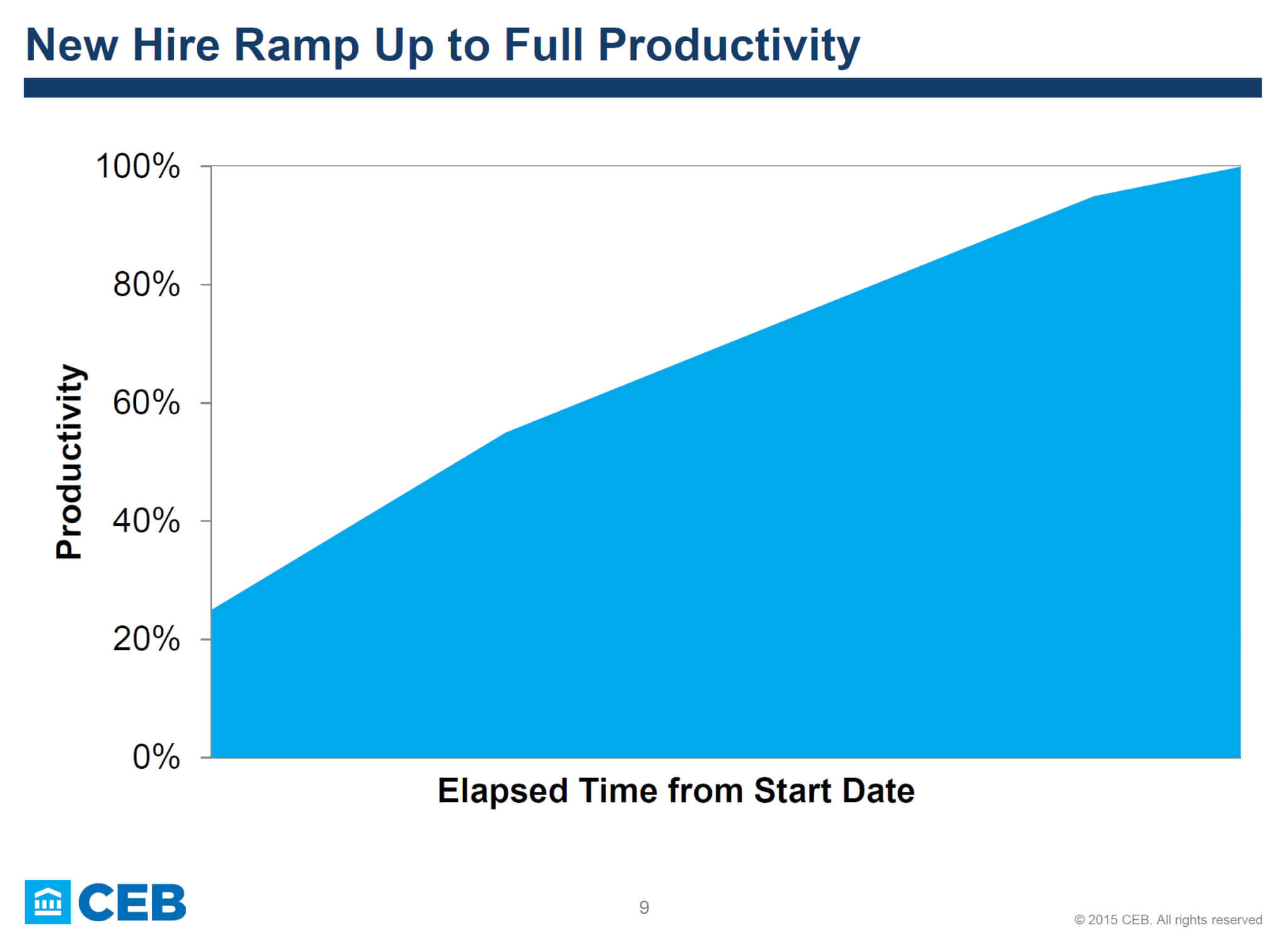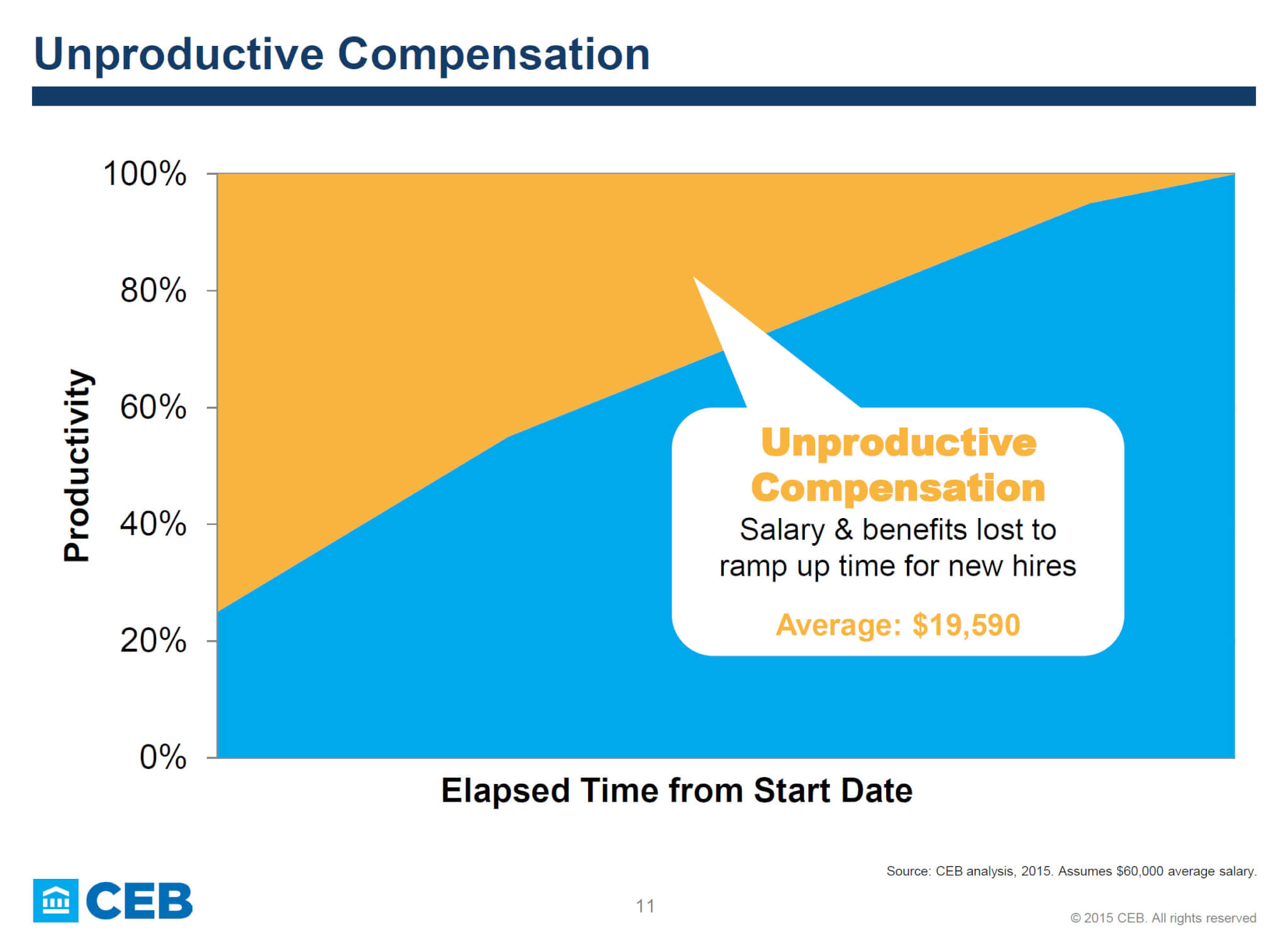By Toby Graham, Compli
Human relationships are messy. Hiring and onboarding aren’t always a cakewalk. Nor are performance reviews. And as we learned in our recent series on discipline and termination, the act of punishing or firing someone can take an emotional toll on all parties involved.
Nonetheless, organizations face increasing pressure to maximize profit and minimize loss by leveraging employee data. In other words, today’s employers frequently need to set aside the emotional, messy component of leading teams and neatly quantify their employees—their human capital.
With that in mind, I’d like to introduce you to a new way to think about human capital expenses: unproductive compensation.

Now, the time horizon might not be 8 months for your organization, but regardless, your chart would most likely look similar to the one above.
This chart gets really interesting when you look at the negative space—let’s fill that in with yellow. This is how much you’re paying an employee for time in which they’re not being productive:

Using $60,000 as an average salary and 8 months as the amount of time it takes to get up to speed. The researchers pegged unproductive compensation at $19,600 per employee. Again, your numbers may be higher or lower based on your average salary and time to productivity.
But here’s where we go nuclear: that $19 grand was per employee. How many employees do you hire in a year?
- 10 employees? That’s $190,000.
- 30 employees? Now we’re talking about $570,000.
I don’t know about you, but that much money not being put to good use would make me want to do something—two things, to be specific:
- Reduce the time to productivity (so we don’t have to pay out so much in unproductive compensation),
and - Reduce turnover (so that unproductive compensation doesn’t have to get paid out as often).
The good news here is that any employer has a key play to bring these costs down—and it involves your onboarding program.
It takes more than a simple “you’re hired!” to feel welcomed, comfortable, and productive in an unfamiliar workplace. New hires need training, motivation, and support before they can fully contribute to an organization.
As any HR professional knows, onboarding is a process that can take several months. Employers who spend that time educating and supporting new employees not only see return on investment in terms of workforce performance, but experience reduced turnover and fewer workplace incidents.
Nonetheless, many organizations neglect their onboarding programs and mistakenly assume any new hire will learn the ropes within a month or less. These inadequate and inconsistent onboarding procedures have a real financial impact: approximately one-third (33%) of new hires look for a new job within the first six months, and about one-quarter (23%) leave before a year on the job.[1]
When the total cost of turnover per employee can range from 100–300% of the individual’s salary,[2] it’s time for employers to optimize their human capital by systematizing the onboarding process.
Toby Graham is Director of Marketing at Compli. She can be reached at Toby.Graham@compli.com. Complí provides a cloud-based solution that manages compliance activities across your workforce. This makes compliance hassle-free, saves you time and money, and protects your business
[1] Source: 2012 Allied Workforce Mobility Survey: Onboarding and Retention
[2] Source: SHRM, https://hbr.org/2015/03/technology-can-save-onboarding-from-itself












